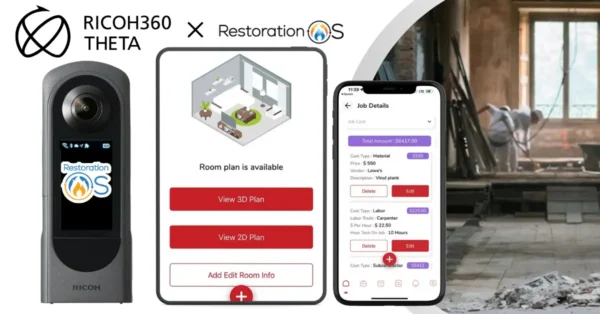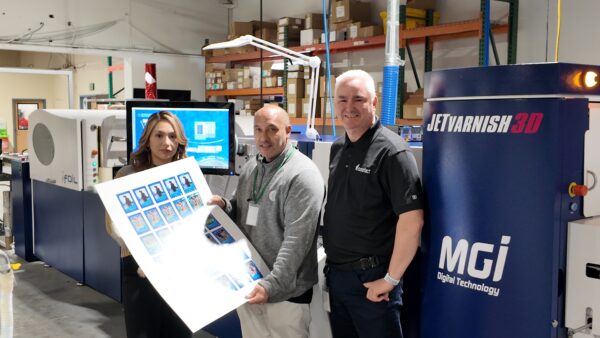Thanks to AI, the time is coming when the technology you sell knows more than you do.
The remarkably clueless MFP residing six feet from my desk refuses to differentiate between A4 and letter-size pages, opting instead not to print at all. The print driver insists content will adjust to the paper size available, but it flat doesn’t happen. Driver and firmware upgrades are ignored. The box is old enough that the dealer and vendor no longer want to know about it. Like my dog, this box has always had trouble catching on and is in dire need of some smarts. I hope not, but you may have customers with machines like this.
Look around and you’ll find many smaller printers that have been operating with only modest intelligence for some time. Take, for example, the RGB colors on your monitor and the CMYK colors that your printer uses. There is an algorithm that translates the RGB palette used when creating a PowerPoint presentation—which you do in RGB—to the CMYK one a printer uses. Sure, it’s just some math, and the color comes out pretty close (at least most of the time) so it looks like some kind of “intelligence” is built into computers and printers.
Although this is not real artificial intelligence (AI), in the sense that the printer is learning and getting “smarter” over time—a process called ‘machine learning’— it is still a basic form of AI. Similarly, a printer that notifies a user that a job created for the A3 printer near his cubicle may not work so well on the A4 printer next to the boss’s desk is at least a little bit smarter. So instead, it automatically routes that document to an appropriate device or an in-plant, while telling the person who created the job where it is being printed. It looks like a higher-level of smarts, but it is just intelligent job routing and has been around for years. But is it AI? Yes and no.
I called Kevin Kern, senior vice president of digital transformation and emerging technologies at Konica Minolta Business Solutions USA, and Steve Burger, vice president, portfolio management and field marketing at Ricoh Americas Corp., to find out more.
Automation and AI
We hear a lot these days about automation, and it is often confused with artificial intelligence. Automation makes work easier because it takes over repetitive tasks like stapling pages of a document together, trimming and folding, or binding pages into sets. It can get more involved when shipping is involved. But these abilities are not actual “intelligence.”
AI will be of increasing importance in the office over the next year or so, and it will be critical by the middle of this decade. Already, some basic AI can work on a number of levels. In a law office, for example, different versions of a document need to go to different people. Some attorneys may need to see one category of information, while others may need different levels of detail. At the moment, AI can use codes printed on a page that define where certain pages go in a larger document or if they should stand alone. Documents can be produced and distributed, as needed, based on the code.
“AI will be less and less noticeable in practice,” said Kern. “AI will be an invisible player in document production and printer maintenance. Some of this is going to be less the printing part and more of what we call RPA, or robotic process automation, which can span things like energy usage or intelligent routing. But AI can be a lot more involved.”
For example, look at something like Google’s Office Suite, which learns from the type of document and even users’ writing styles, and it can complete sentences for the user. Kern described this capability as a little like cell-phone autofill on steroids, adding that it will be part of various office productivity software suites that connect to office printers. In his view, office printing and AI will become increasingly joined at the hip.
“We’ll really see some intelligence once AI is integrated into the firmware of a print engine,” said Kern. “Correctly structured RPA can already trigger workflows from a scanned document. It’s not really machine learning yet, but that is coming.”
Obviously, this requires software that understands when and where documents are created and how they are printed. The real value will depend on the extent to which AI integration enhances the printing process. Once properly integrated, this will be advantageous for your customers by simplifying internal workflows and reducing labor.
But what do AI and smarter printers mean for copier/printer dealers? Glad you asked.
The Shakeout for Dealers
Smarter machines will be game-changers, and it goes well beyond printing. Customers are demanding ever-better coordination, integration, and connectivity amongst workers. The coronavirus pandemic and the coming “new normal” will likely result in more people working remotely and having to collaborate with colleagues. Sending and receiving printed documents to and from the next zip code or another state will have to happen as easily and painlessly as in a traditional office. This raises the stakes for office printers and software. AI will help tie it all together.
At the moment, this is largely above the pay grade of most hallway and office printers, scanners, and copiers. But coming fast are printers, computers, and cloud servers that connect houses, condos, offices, and dealers. This will make a difference whenever the new normal arrives, and the volume of remote work increases. Printers and copiers in all kinds of offices will be tracking what they do and automatically communicating the status of each device back to dealers and their service technicians.
Imagine being able to actively monitor all the machines you’ve sold in a given market area and having your service techs looped into the needs of specific machines—over their smartphones. Then, a tech would know, based on usage and inventory levels, printer number 14 in the law firm on the 8th floor of 103 State Street will be out of black toner by Thursday and that the customer has none in stock. Meanwhile, another rep gets a message over his phone that the big full-color box at the ad agency in Newtown Heights will need a feed roller, developer, and cyan toner on Friday. This lets him show up with the products on Thursday, no guessing involved, and avoid downtime for the customer.
The Value of Knowing More
These types of heads-up messages can help dealers adjust the supply schedule and maintenance for the machines they’ve sold.
“This is beyond the predictive servicing we have now,” said Kern. “This is prescriptive servicing that avoids a problem from ever occurring.”
This makes service calls less visible to customers because machines are less likely to go down. Basically, it lets service techs make calls because they know a specific machine needs attention.
Ricoh’s similar offering is called Smart Support. It’s part of ARMS (Advanced Remote Mobile System) that uses @Remote, a cloud-based service that provides Ricoh and its dealers detailed information about every device at a customer location.
“When technicians know what is going on with all of a customer’s machines, we are able to provide a much more proactive level of support,” explained Ricoh’s Burger.
As is the case with offerings from other OEMs with high-end production printing systems, Smart Support is a trickle down from the bigger presses the company has in place around the world. The difference is that providing the same level of info to local dealers enables them to provide better service to their customers. Ricoh uses a “big data” strategy to gather, analyze, and act on the condition of millions of MFPs it has in place around the world, while also localizing it to specific markets. This is worth paying attention to. Additional capabilities are being rolled out this year, so watch for some important changes around the time you read this, especially related to scanning and information capture in the cloud.
“Our devices all have an Android-based Smart Operation Panel with apps that give us a way to tell a dealer how quickly consumables may run out,” reported Burger.
This means your service techs can know exactly what to take on a service call. As a result, your service team spends less time setting up service calls, and productivity at your customer increases because their printer, copier, or scanner is more likely to be up and running when they need it. Many of Ricoh’s devices already can self-diagnose pending problems so techs can know in advance what a problem may be, and even receive a download of a system patch or upgrade overnight, like a Tesla automobile. Watch for this to land on smaller machines across Ricoh’s product line.
Behind the Curtain
This capability enables devices that use AI to be part of a virtually invisible communications process. Available in limited ways now, it will soon be standard operating procedure as newer generations of printers, copiers, and MFPs arrive in offices across the land.
It also provides dealers with opportunities for promoting AI as a way to ensure the machines they sell deliver the kind of uptime that keeps customers smiling. It helps dealers better plan car stocks, adapt service schedules to everyday needs, and increase customer satisfaction. Having AI tell you a customer is low on ink or toner, or that a machine needs servicing makes you look like a genius and helps keep your dealership aligned with customers’ needs.
There’s an even bigger picture that can also tie directly into sales. Suppose AI can show that a device a customer relies on is consistently exceeding its monthly duty cycle of 200,000 impressions by 25%. You already knew this from the page counts your service rep has been reporting. You can now more easily quantify the costs and make an argument that the customer should consider a second machine to balance the load, minimize downtime, and even provide back-up capabilities. The AI reporting could show the costs associated with four months of running at an average of 250,000 impressions, including break-fix incidents, providing a compelling starting point for a sales discussion.
Some of this intelligence is already at the fingertips of many dealers, and the current machine learning and intelligence built into an increasing number of small printers is only beginning. Future success demands that you take advantage of this knowledge. While all but invisible to average users, this information is like gold for dealers because it can make service—that critical part of customer satisfaction and your revenue stream—as invisible to customers as the information their printers and copiers are sending back to your dealership.
Access Related Content
Visit the www.thecannatareport.com. To become a subscriber, visit www.thecannatareport.com/register or contact cjcannata@cannatareport.com directly. Bulk subscription rates are also available.




